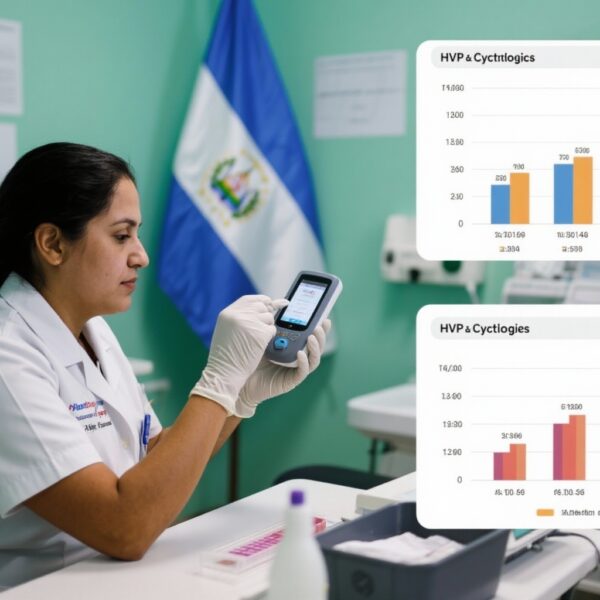Study Background
Invasive cervical cancer remains a significant health burden worldwide, especially among women who do not participate in regular cervical screening programs. Persistent infection with high-risk human papillomavirus (HPV) types is the key etiologic factor for cervical carcinogenesis. Conventional cytology-based screening complemented by clinician-collected cervical samples for HPV testing is the gold standard in many countries; however, barriers such as discomfort, accessibility issues, and sociocultural factors reduce participation rates. Alternative, less invasive self-sampling strategies could improve screening uptake, thereby reducing cervical cancer incidence and mortality. This study addresses this critical public health need by evaluating the utility of self-collected urine and vaginal samples to detect HPV infection using a validated genotype assay in a Japanese population with abnormal cervical cytology.
Study Design
This investigation was conducted in two sequential steps. The first phase aimed to optimize urine sample storage conditions, including the choice of storage container, temperature, and duration before HPV assay processing using the BD Onclarity® HPV assay. These parameters are crucial as they influence the integrity of HPV DNA in urine, affecting test sensitivity. The second phase compared HPV detection outcomes among self-collected urine and vaginal samples against clinician-collected cervical samples, serving as the reference standard. The study population comprised 121 women presenting with abnormal cervical cytology, reflecting an enriched cohort for HPV-related pathology. All participants provided three sample types: clinician-collected cervical, self-collected vaginal, and self-collected urine. HPV genotyping was performed promptly per optimized conditions determined in the initial study phase.
Key Findings
The study demonstrated that urine samples stored in the BD Probe Tec™ (QxUPT) vial for less than 72 hours at room temperature delivered the highest HPV positivity rates. Under these conditions, the prevalence of high-risk HPV types in cervical samples was significant: HPV16 was detected in 41.7%, HPV18 in 10%, with HPV types 31 and 52 each identified in 12.6%. Concordance analysis revealed a moderate agreement between clinician-collected cervical and urine samples with a concordance rate of 63.9% (kappa: 0.34; 95% CI: 0.21-0.47), indicating fair agreement. This contrasted with a stronger concordance of 77.8% (kappa: 0.68; 95% CI: 0.53-0.83) between cervical and self-collected vaginal samples, corresponding to good agreement.
Sensitivity analysis demonstrated that the BD Onclarity® HPV assay detected HPV in 82.7% of cervical samples (reference standard), 75.7% of vaginal samples, and 46.4% of urine samples in a population with approximately 70% prevalence of HPV-related lesions or tumors. These data indicate that self-collected vaginal samples provide robust sensitivity close to clinician-collected cervical samples, whereas spot urine samples exhibited notably lower sensitivity. This variation underscores potential limitations in sample type and collection protocols, especially for urine-based HPV detection.
Expert Commentary
The study adds valuable evidence supporting the feasibility of self-collection strategies for cervical cancer screening in Japan, aligning with global trends advocating for patient-centered, minimally invasive diagnostics. The BD Onclarity® HPV assay’s good performance in vaginal self-samples suggests that this approach could effectively complement existing screening methods, potentially improving coverage rates among underscreened populations. Low sensitivity in urine samples, despite moderate concordance, highlights the need for methodological refinements such as first-void urine collection, enhanced preservative formulations, and possibly longer incubation times to concentrate viral DNA. Importantly, the study population with abnormal cytology and high lesion prevalence limits generalizability to a broader screening context where HPV prevalence is typically lower.
Current guidelines support HPV testing on self-collected vaginal samples, especially when clinician sampling is infeasible. However, urine-based HPV testing remains investigational despite its non-invasive advantages, due in part to variable assay sensitivity and lack of standardized protocols. This study’s findings corroborate these challenges but also indicate a promising direction pending further optimization and large-scale validation.
Limitations
The principal limitation is the reduced sensitivity of HPV detection from spot urine samples compared with cervical and vaginal samples, indicating methodological constraints that require improvement for clinical implementation. The single-center design focused on women with abnormal cytology, potentially biasing the HPV prevalence upwards and thereby inflating test performance metrics compared to a general screening population. The study did not assess long-term outcomes, such as negative predictive value or impact on cervical cancer incidence, which are essential to establish screening efficacy. Further, the study did not evaluate patient acceptability or cost-effectiveness of self-collection methods, factors critical to public health adoption.
Conclusion
This study establishes that self-collected vaginal samples tested with the BD Onclarity® HPV assay exhibit good concordance and high sensitivity compared to clinician-collected cervical samples, indicating promising utility for expanding cervical cancer screening accessibility. Self-collected urine demonstrated moderate concordance but significantly lower sensitivity, underscoring the need for optimization of collection and processing protocols. Identifying ideal storage conditions for urine samples enhances the reliability of testing, advancing the prospects of urine-based HPV screening.
These findings advocate for larger, population-based, prospective studies to validate and refine self-collection methods, particularly urine testing, and to assess real-world effectiveness in increasing screening coverage and early detection of cervical neoplasia. Incorporating self-collected sampling into national screening programs could prove an important strategy in overcoming screening barriers and reducing cervical cancer burden in Japan and globally.
Funding and Clinical Trial Registration
The original publication did not specify funding sources or clinical trial registration details. Further inquiries to the authors or affiliated institutions may provide these details.
References
Mizuno M, Kamio M, Sakihama M, Yanazume S, Togami S, Kakizoe T, Kobayashi H. The Utility of a Human Papillomavirus Genotype Assay for Cancer Screening in Self-Collected Urine and Vaginal Samples from Japanese Women. Gynecol Obstet Invest. 2025;90(2):143-152. doi: 10.1159/000541641. Epub 2024 Oct 7. PMID: 39374596; PMCID: PMC11965806.
International Agency for Research on Cancer. Cervical Cancer Screening. IARC Handbooks of Cancer Prevention. Lyon: IARC; 2020.
Arbyn M, Simon M, Peeters E, et al. Accuracy of human papillomavirus testing on self-collected versus clinician-collected samples: a meta-analysis. Lancet Oncol. 2020 Feb;21(2):172-183. doi:10.1016/S1470-2045(19)30694-0.
Ronco G, Dillner J, Elfström KM, et al. Efficacy of HPV-based screening for prevention of invasive cervical cancer: follow-up of four European randomised controlled trials. Lancet. 2014 Sep 13;383(9916):524-32. doi: 10.1016/S0140-6736(13)62218-7.



